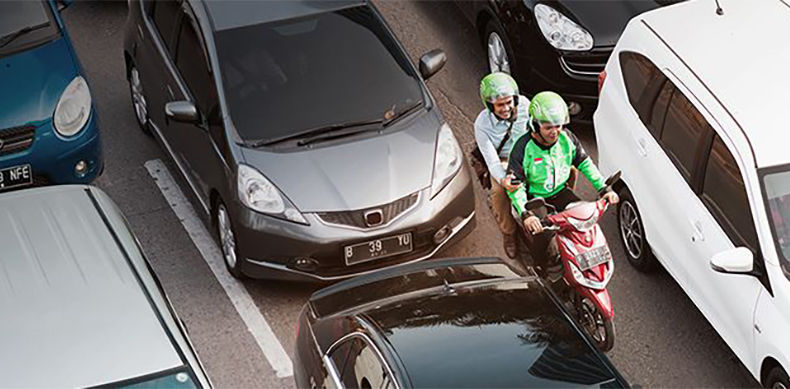Go-Jek takes on goliath Grab in Southeast Asia
- Mar 21, 2019
- 4 min read

Grab’s acquisition of Uber’s Southeast Asian operations in March 2018 made it the dominant player in the region’s ride-hailing industry, a Goliath. While local ride-hailing companies exist in every country, none have had the financial muscle to challenge Grab’s dominance, until now. Go-Jek, the Indonesian ride-hailer has entered the fray. However, the competition between these two companies goes beyond the ride-hailing. Both companies plan on turning their platform into the indispensable "super app" of Southeast Asia, handling a diverse range of services from transport and online payments to food delivery.
The victor of this David and Goliath matchup will determine, not just which app dominates the ride-hailing industry but which app will be used the people of Southeast Asia to live and do business.
Grab achieved its dominant position by successfully driving Uber, one of the world’s most valuable tech companies, out of Southeast Asia. The strategy used by Grab was simple and based on providing a service that suited the commercial and cultural needs of the local population. This strategy of “localisation” was significantly more successful than Uber’s one size fits all approach, which left unable to adapt quickly enough to meet the diverse needs of different cities and countries. For example, it took Uber two years to begin accepting cash payments in countries where cash is king, and only a small proportion of the population has access to credit cards and formal banking institutions. Grab, however, recognised this nuance and began accepting cash payments from the beginning, allowing it to gain ground on its local competitors.
The challenge to Grab’s dominance came in March 2018 when Go-Jek announced a US$500 million (AUD$700 million) investment in regional expansion. By September of that year Go-Jek had begun offering services in Vietnam, and by the end of 2018, it was also operating in Thailand and Singapore. Within four months of launching in Vietnam, Go-Jek now controls 40 per cent of Ho Chi Minh City's market share for motorcycle ride-hailing. Go-Jek has also experienced initial success in Singapore, Grab’s home turf, where it captured 20-25 per cent of the ride-hailing market after only four months. Go-Jek's initial success is the result of their strategy of poaching drivers and undercutting Grab's fares by 10 to 30 per cent.
But it hasn’t all been smooth sailing for Go-Jek. Filipino authorities blocked its entry into the Philippines. It did not receive permission to launch a ride-hailing service because its local partner company, Velox Technology, did not meet the criteria for local ownership. Go-Jek lodged its application in August of 2018, the very month that ridesharing was added to a list of industries that requires 60 per cent domestic ownership. This setback has not deterred Go-Jek either from taking another crack at the Philippines or from expanding further. Go-Jek President Andre Soelistyo announced on February 27 that Go-Jek is conducting market research for Myanmar, Malaysia, and Cambodia. He also stated that by the end of 2019, Go-Jek plans on operating in six countries and having the largest or second largest share of the market by the end of 2019. Go-Jek's goals will not be easy to accomplish by any means due to Grab's dominant position. However, Go-Jek a strategy that is both unorthodox and risky, but it just may achieve what it set out to do.
Go-Jek's strategy is to work with local partners in each country to create an individual platform with a brand and a service that is unique to that country. For example, in Vietnam Go-Jek launched services through a local partner, Go-Viet. Go-Jek will provide technical support and expertise, while the local founding team is responsible for operations. While this hand's off approach carries significant risk, if the domestic partner upsets customers it will harm Go-Jek's image, it may give Go-Jek the edge it needs to win its battle with Grab.
Ironically, this is an intensified version of the localisation strategy that Grab used to push Uber out of the region. In the way that Grab was able to leverage its better understanding of regional needs and cultures to defeat Uber. Go-Jek hopes to do the same, only on a national, not regional level. This "hyper localisation" strategy, in theory, allows Go-Jek and its local affiliates to respond faster and design services that specific to a country or even a particular city. If Grab’s success is anything to go by, Go-Jek’s strategy of going local-er might be successful.
Go-Jek may prevail but it will not be quick nor easy. Grab has an iron grip on many of the countries that Go-Jek is looking to enter and the latter’s strategy has some risks and pitfalls that could derail its expansion. Even if Go-Jek is unable to break Grab's hold on Southeast Asia, then at the very least, this intense contest will drive down the price and push both companies to build the best platform possible.
Andrew Thomson is the International Trade and Investment Fellow for Young Australians in International Affairs.



Comments